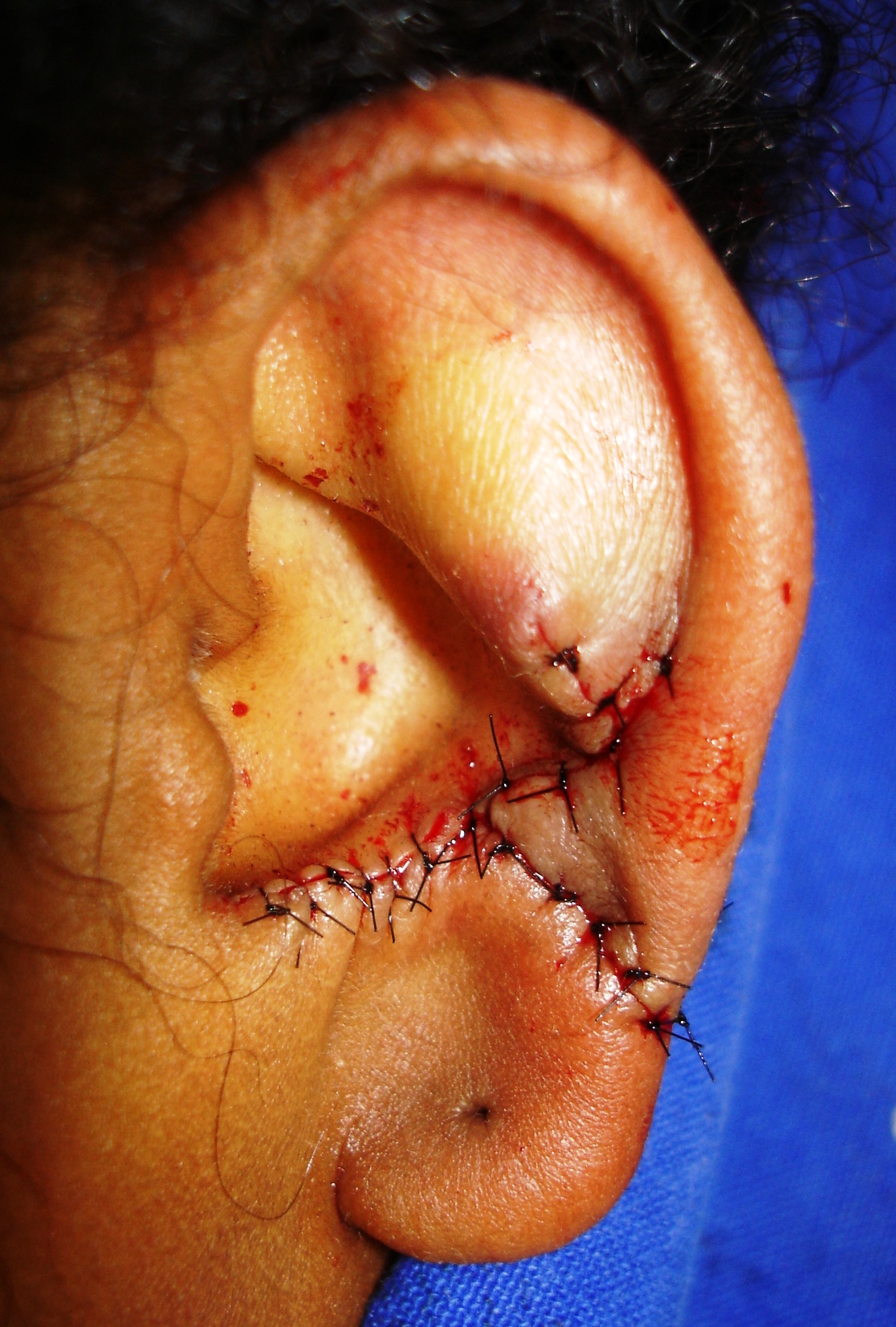Friday, October 31, 2008
14216
Question Mark Ear Treatment
Concise Purpose: Although rare, the congenital external ear deformity with weakening of the medium segment of conch and of scapha is usually denominated “question mark ear” because of the called minor development of that segment and by its characteristic shape. Some authors justify this deformity by embryological studies of auricular complex. The major axis becomes smaller and in some patients the ear gap too. Some authors have published their experiences to correct this kind of deformity using a condrocutaneous flap of sliding, z-plasty, wedge resection and skin graft based on their own choice. Our experience is based on three patients using a sliding flap and a compensatory triangle of the conch to balance the reduction of the major axis of the ear and support its shape as natural as possible.
Patients and methods: Three female patients were submitted to a surgical procedure. They were 17, 19 and 20 years old; the youngest has a unilateral deformity and the others, bilateral. The procedures were systematically done using a sliding flap associated to resection of a compensatory triangle of the conch, whose characteristics were modified by the extension of the ear defect. The bilateral ones were asymmetrical and in the right ears the defect was less seeming, so the youngest patient needed only the use of sliding scrap. The major axis and the size of the defect were measured before and after the surgery to be compared.
Summary of results: The surgical procedures were almost similar, however the deformities were not. They were different even in the same patient. Although the same technical principle of sliding flap and compensatory triangle of the conch has been used, the extension of the defect determined minor or major resection and suture lines different in position and extension. International literature has showed that ear gaps around 20 mm produce greater distortion of the ear shape and dimension after surgery. In our experience we have not faced this problem. There was a 21 mm ear gap patient and the axis reduction was about 4 mm; and, the others, with smaller defects, were about 2 mm. These smaller reductions could be considered aesthetically acceptable.
Conclusions: The described procedure is not technically difficult. It can be performed under local anesthesia, ambulatory condition and in only one operating time. It was developed to solve specifically the question mark ear deformity.




